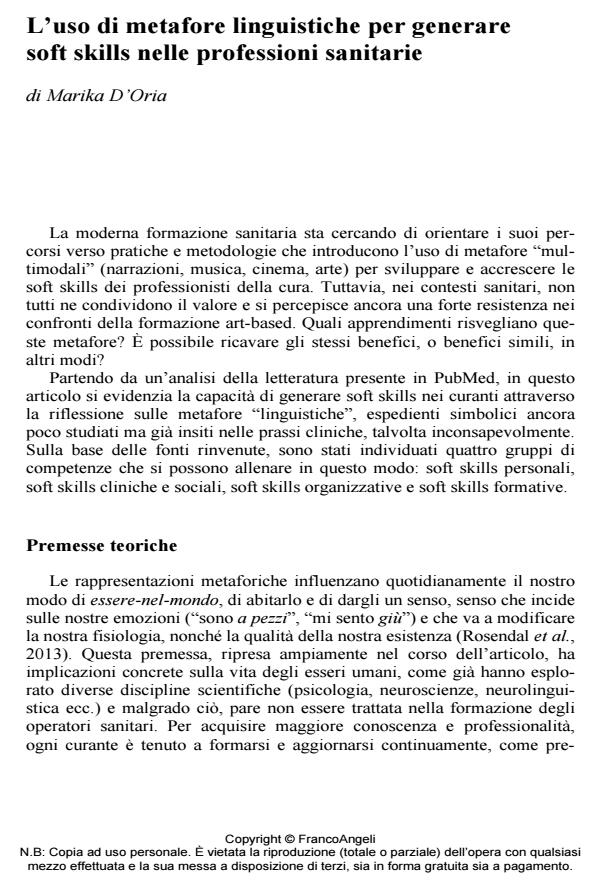L’uso di metafore linguistiche per generare soft skills nelle professioni sanitarie
Titolo Rivista EDUCATIONAL REFLECTIVE PRACTICES
Autori/Curatori Marika D'Oria
Anno di pubblicazione 2016 Fascicolo 2016/2
Lingua Italiano Numero pagine 17 P. 72-88 Dimensione file 227 KB
DOI 10.3280/ERP2016-002006
Il DOI è il codice a barre della proprietà intellettuale: per saperne di più
clicca qui
Qui sotto puoi vedere in anteprima la prima pagina di questo articolo.
Se questo articolo ti interessa, lo puoi acquistare (e scaricare in formato pdf) seguendo le facili indicazioni per acquistare il download credit. Acquista Download Credits per scaricare questo Articolo in formato PDF

FrancoAngeli è membro della Publishers International Linking Association, Inc (PILA)associazione indipendente e non profit per facilitare (attraverso i servizi tecnologici implementati da CrossRef.org) l’accesso degli studiosi ai contenuti digitali nelle pubblicazioni professionali e scientifiche
The modern medical education is trying to direct its path towards practices and methodologies that introduce the use of "multimodal metaphors" (narrations, music, cinema, art etc.) to develop and enhance the soft skills of healthcare professionals. However, in health care settings, this vision is not always accepted and there is a strong resistance to the art-based education. How to create these skills in other ways? Starting from the literature found in PubMed, this article analyses cases, experiences and research that highlight the ability to generate soft skills in healthcare professionals through the reflection on "linguistic metaphors", symbolic elements still little studied but already inherent in clinical practice, sometimes unconsciously. Based on the discovered sources, four groups of skills have been identified: personal soft skills, clinic and social soft skills, organizational soft skills and educative soft skills. The purpose is to promote greater consideration of these issues in the training of students as well as in the continuing education of physicians, and in health organizations
- Le metafore linguistiche nella formazione sanitaria. Il contributo della neuro-fenomenologia Marika D’Oria, in EXCELLENCE AND INNOVATION IN LEARNING AND TEACHING 1/2017 pp.33
DOI: 10.3280/EXI2017-001003
Marika D'Oria, L’uso di metafore linguistiche per generare soft skills nelle professioni sanitarie in "EDUCATIONAL REFLECTIVE PRACTICES" 2/2016, pp 72-88, DOI: 10.3280/ERP2016-002006